Vertical gardens, also known as green walls, or living walls, have grown to be one of the hottest architecture trends in recent years. These vertical built structures intentionally covered by vegetation enjoy exponential popularity among designers and architects who use them to incorporate living nature into urban environments. Bringing in natural elements to the cityscape lifts our mood, making us happier and more productive, as they appeal to our innate need to be around nature.
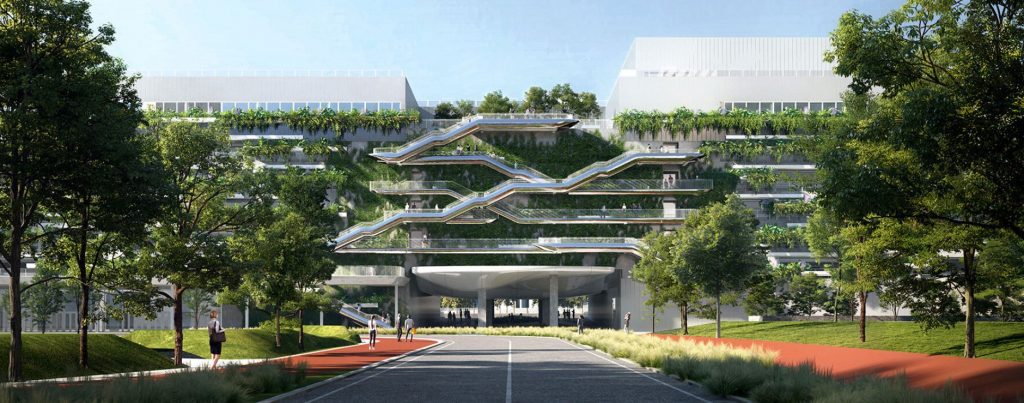

Toranomon Hills by Ingenhoven Architects
International practice Ingenhoven Architects with offices in Düsseldorf, Sydney, Singapore, and St. Moritz has completed two new skyscrapers in Tokyo to flank the Toranomon Hills Tower, one of Japan’s tallest skyscrapers. The buildings are characterized by cascading lower levels covered in lush plantings aiming to interweave the skyscrapers with their environment. The stepped terraces and a public gardened plateau one level above the street are designed to reflect the greenery of the adjacent parks and gardens of the historic Atago Shrine, a Shintō shrine dating back to 1603.
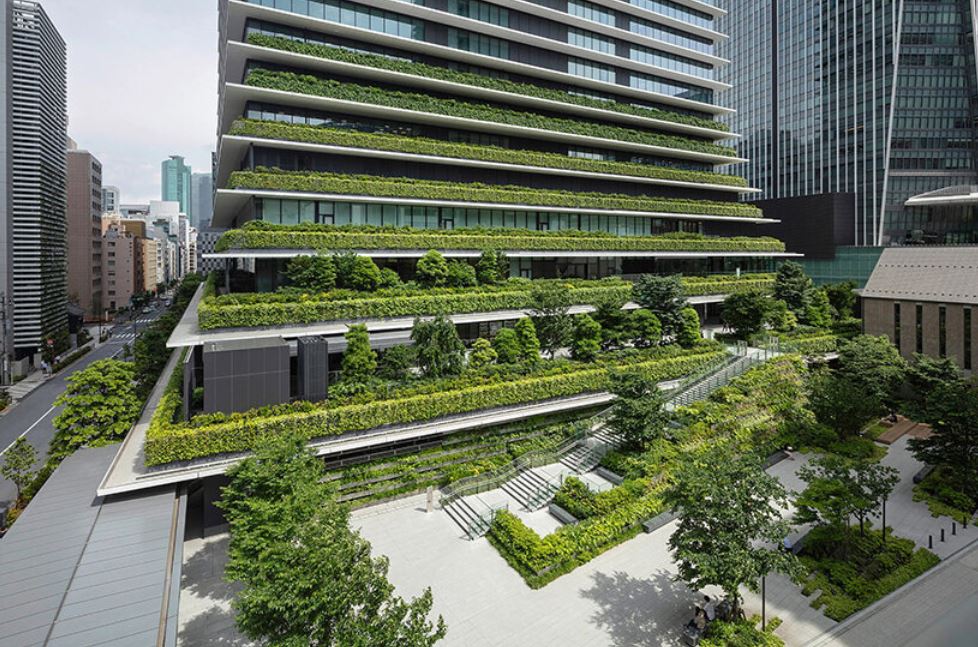
Toranomon Hills by Ingenhoven Architects
The green plateau is reserved for pedestrians and links all three towers together, providing access to the cafés and restaurants in both new high-rises, along with shops, a large lobby, and co-working space. Benches invite visitors to linger and enjoy the exercise areas and tranquil fountains – a place of balance with zones of calm amid the rush of the largest city in the world.
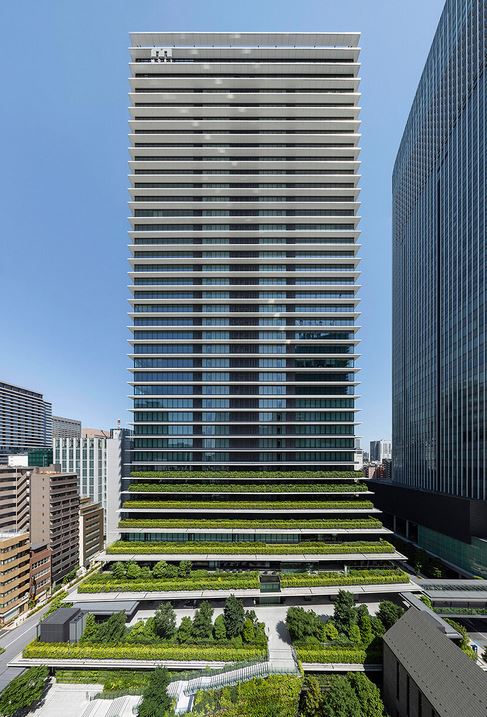

Toranomon Hills by Ingenhoven Architects
The total green area of the ensemble is approximately 7,800 square meters and includes numerous tall trees. This achieves a green replacement rate of 64.5% and a CASBEE ‘S’ rating — the highest level in this classification.


Toranomon Hills by Ingenhoven Architects
Besides, informed by ancient temple buildings, the towers are structurally configured to passively dampen seismic vibrations, which would help them withstand possible earthquakes and typhoons, not uncommon for the area.
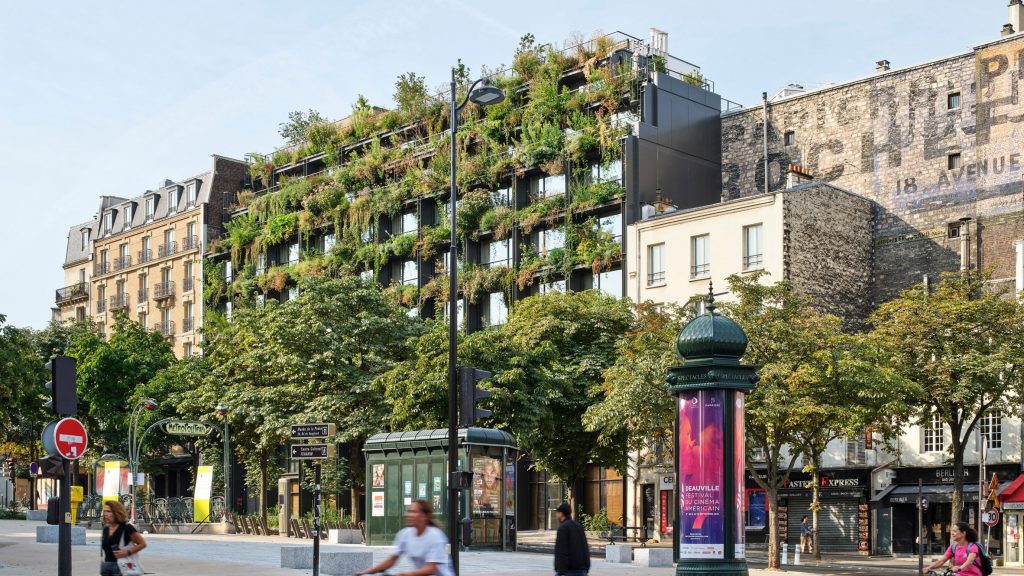
Villa M by Philippe Starck in collaboration with Triptyque and Coloco
Located in Montparnasse, Paris, Villa M hotel claims to be focused on healthy living and a desire to “bring nature back to the city”. Naturally, such a concept could not possibly go without green walls.
The team headed by designer Philippe Starck and comprised of French-Brazilian studio Triptyque and landscape studio Coloco has covered the entire exterior of the building with a framework of deep black steel beams, planted with trailing plants. The edifice itself serves as the support for this vertical garden, which the team hopes will grow and occupy the entire facade, turning the building into a vertical forest, and becoming the building’s main architecture element.
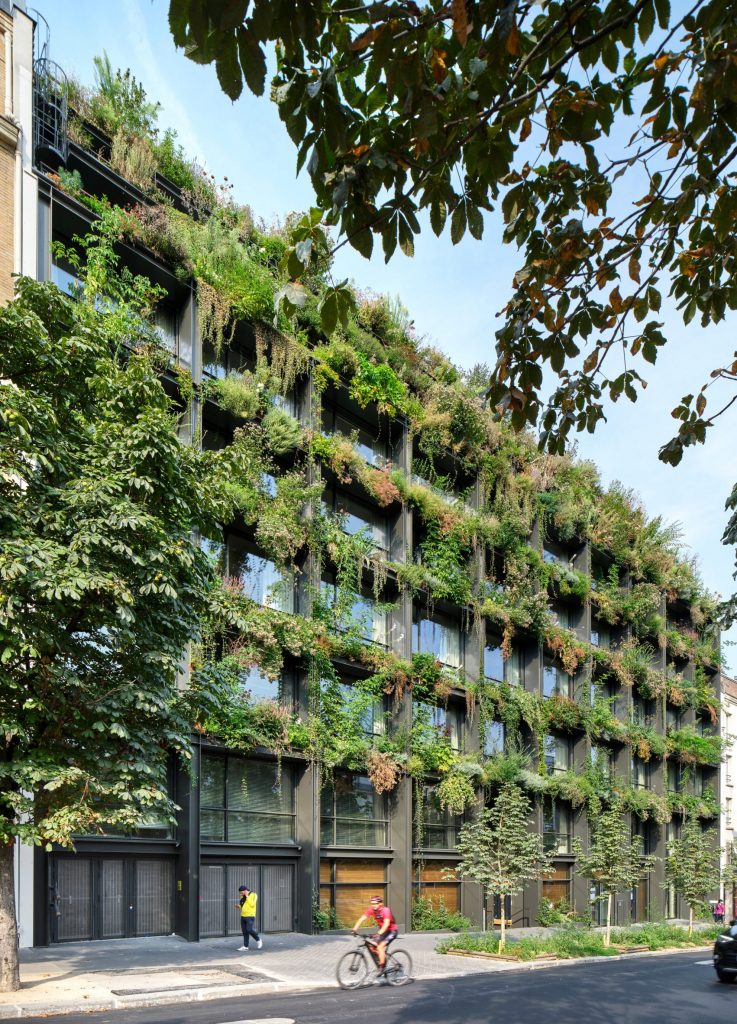
Villa M by Philippe Starck in collaboration with Triptyque and Coloco
The human being is always at the heart of the Villa M concept. According to Starck who artistically directed the project, the traveler must feel at home, in calm, soft, and maternal rooms, pleasant to live in.

Villa M by Philippe Starck in collaboration with Triptyque and Coloco
Following the original plan to create “a building of a new era, where man is no longer opposed to nature and the living,” the hotel’s entrance leads directly into a lounge and restaurant space with an open kitchen, which in its turn provides access to a dining terrace at the rear planted with fig trees. In the meantime, most of the 67 rooms and six suites of the hotel that are located at the block’s four uppermost storeys open out onto greenery-filled balconies or terraces.
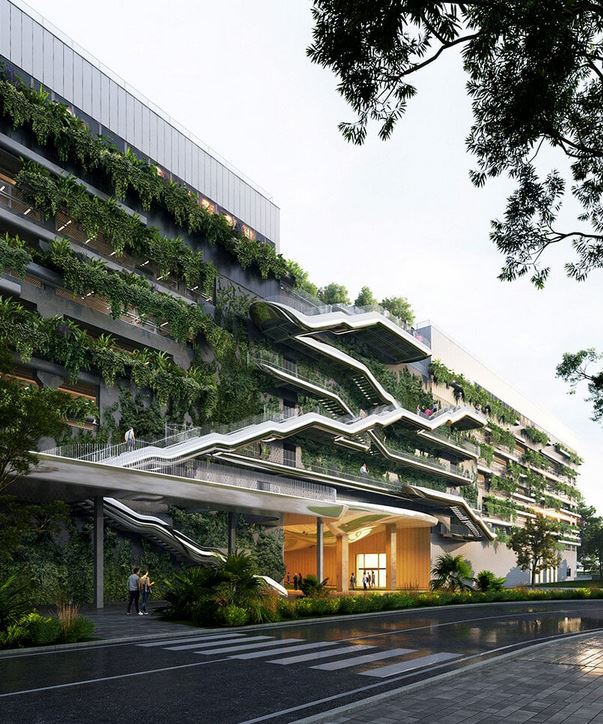
MoLo by MAD Architects (also header image)
Set along the western boundary of the Milano Innovation District (MIND), a recently developed neighborhood bringing together cutting-edge scientific research and education, business, and leisure facilities, MoLo (short for Mobility and Logistic hub) is designed by MAD Architects as an integration of nature and architecture. The building is intended to perform as a welcoming entrance and education space for issues related to mobility. Here, visitors can drop off their cars to explore the district on foot and see innovative transportation technology in person.

MoLo by MAD Architects
Expressing this concept, the team, which also included architect Andrea Nonni, Open Project, and Progeca, decided to adorn the main facades of the dazzling five-story parking structure that acts as the centerpiece of the MoLo, with lush vegetation. This is intended to not only beautify the neighborhood but also to capture airborne carbon. The use of vertical landscaping as a design element also allows the MoLo to visually blend into the verdant landscaping of its surroundings.
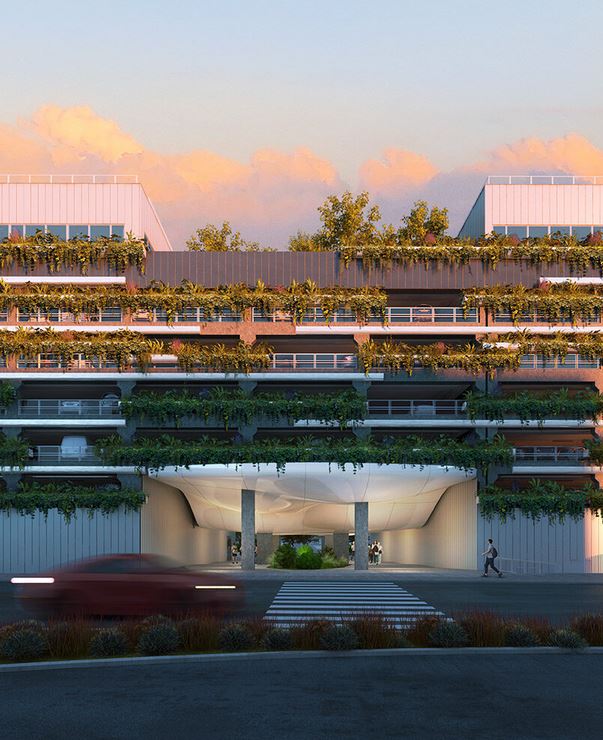
MoLo by MAD Architects
To blur the boundary between indoor and outdoor even more, an open gallery near the public interchange tunnel that cuts diagonally across the ground floor along the center of the building physically connects the MoLo to the nearby Rho-Arese park. The ceiling of the gallery is marked by a large cloud-like sculpture that undulates in the direction of pedestrian movement to enhance the feeling of a close connection between the manmade and the nature.